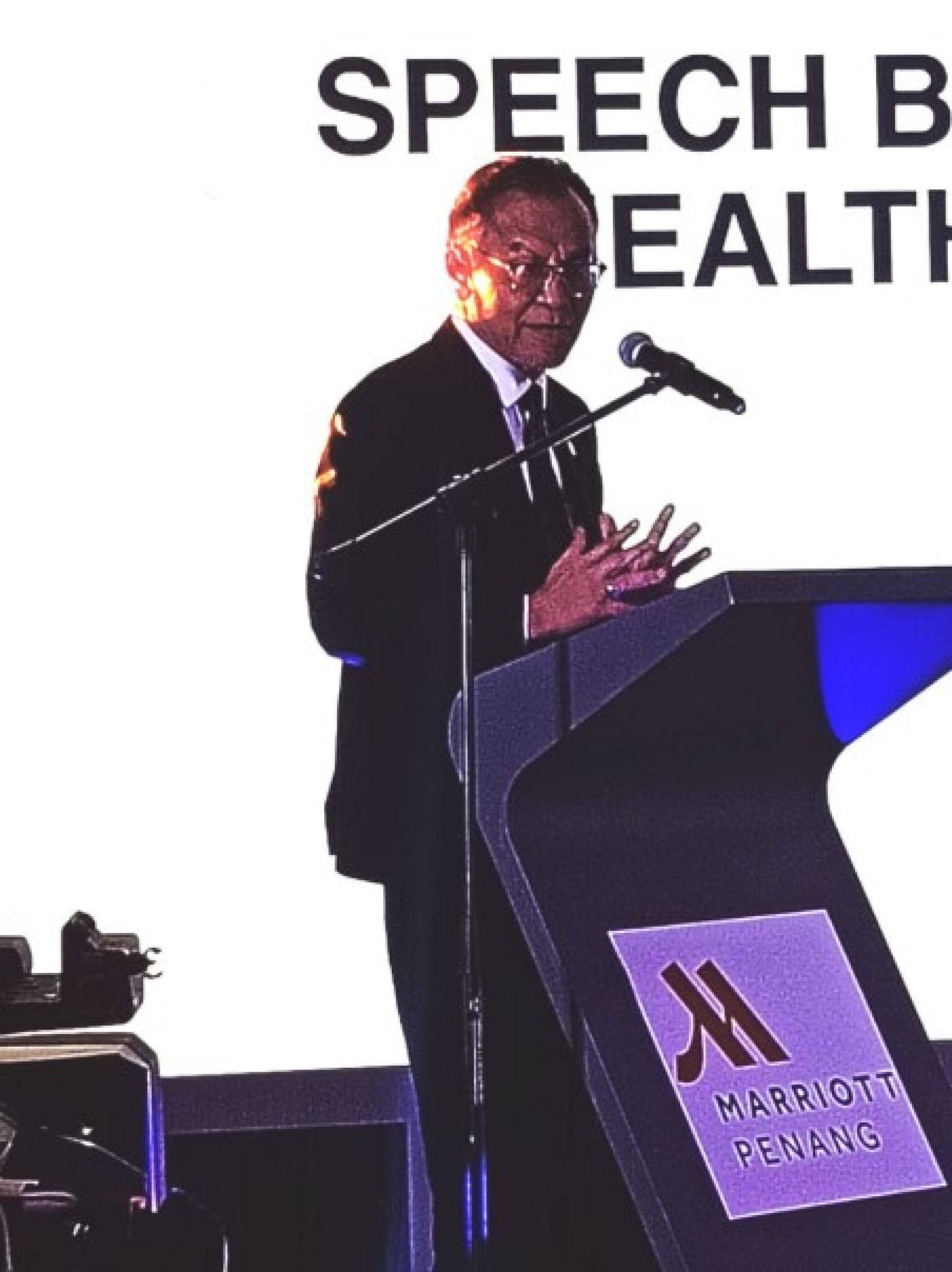(Kuala Lumpur, 14th) – Health Minister Datuk Seri Zulkefli Ahmad said that Malaysia’s healthcare system is at a critical moment of reform, standing at a crossroads that will determine its future direction, with the biggest challenge being healthcare financing reform.
He said that the country’s public medical facilities are facing various current challenges, while also needing to address pressing future demands.
He pointed out that public hospitals are sustained by tax revenue, while private hospitals rely on service fees and insurance, and both must together form a complete ecosystem that complements and supports each other.
He said that the country’s public medical facilities are facing various current challenges, while also needing to address pressing future demands.
He pointed out that public hospitals are sustained by tax revenue, while private hospitals rely on service fees and insurance, and both must together form a complete ecosystem that complements and supports each other.
“Therefore, at the heart of healthcare reform is finance reform. Currently, as an upper-middle-income country, Malaysia’s healthcare expenditure accounts for only 4.5% of GDP, far below the recommended 5% to 6%. I have always asked the government to allocate at least 1% more to the Ministry of Health each year, but relying solely on fiscal allocations is no longer enough, so I have proposed new measures.”
“One of the key points is to generate additional income through 'Friends of MOH' (Rakan KKM), to increase remuneration for specialist doctors, and to reinvest any surplus into the public healthcare system. At the same time, this will set a price benchmark and force private hospitals to compete more reasonably.”
Speaking on Saturday (13th) at the 65th Anniversary Dinner of the Malaysian Medical Association, Zulkefli Ahmad pointed out that Malaysia’s healthcare system has long been seen as a benchmark of fairness and universality, serving as a model for middle- and low-income countries in the last century. However, today, the country faces unprecedented pressure and challenges. Most notably, not only the middle- and low-income groups but even the high-income T20 class are now relying on public medical facilities.
“Furthermore, the impact of infectious diseases from the Covid-19 pandemic has not fully subsided, while a wave of non-communicable diseases (NCDs) is following closely on its heels. This 'double burden' is weighing down Malaysia's healthcare system. For non-communicable diseases alone, the country pays as much as RM 64.3 billion each year, including both direct and indirect costs such as losses in productivity, sick leave absenteeism, reduced work efficiency, and premature death—causing a heavy blow to our workforce and economy.”
“In addition, the issue of an aging population further burdens the public healthcare system. Yet an even greater challenge is that not only must I strive to retain specialist doctors and upgrade public facilities, but also ensure that private medical hospitalization costs are regulated, so they don’t spiral out of control. This is a daunting task. Therefore, I have always emphasized that general practitioners are the backbone of our primary healthcare system; working hand in hand with me, they ensure healthy collaboration between public and private sectors. As Health Minister, I serve not only the public sector, but must also take care of the private sector.”
“One of the key points is to generate additional income through 'Friends of MOH' (Rakan KKM), to increase remuneration for specialist doctors, and to reinvest any surplus into the public healthcare system. At the same time, this will set a price benchmark and force private hospitals to compete more reasonably.”
Speaking on Saturday (13th) at the 65th Anniversary Dinner of the Malaysian Medical Association, Zulkefli Ahmad pointed out that Malaysia’s healthcare system has long been seen as a benchmark of fairness and universality, serving as a model for middle- and low-income countries in the last century. However, today, the country faces unprecedented pressure and challenges. Most notably, not only the middle- and low-income groups but even the high-income T20 class are now relying on public medical facilities.
“Furthermore, the impact of infectious diseases from the Covid-19 pandemic has not fully subsided, while a wave of non-communicable diseases (NCDs) is following closely on its heels. This 'double burden' is weighing down Malaysia's healthcare system. For non-communicable diseases alone, the country pays as much as RM 64.3 billion each year, including both direct and indirect costs such as losses in productivity, sick leave absenteeism, reduced work efficiency, and premature death—causing a heavy blow to our workforce and economy.”
“In addition, the issue of an aging population further burdens the public healthcare system. Yet an even greater challenge is that not only must I strive to retain specialist doctors and upgrade public facilities, but also ensure that private medical hospitalization costs are regulated, so they don’t spiral out of control. This is a daunting task. Therefore, I have always emphasized that general practitioners are the backbone of our primary healthcare system; working hand in hand with me, they ensure healthy collaboration between public and private sectors. As Health Minister, I serve not only the public sector, but must also take care of the private sector.”
